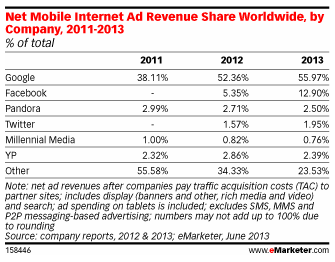5% of negative online reviews are deceptive, finds MIT study

© carlos castilla – Fotolia.com
But what if reviews are simply wrong, or bought from people that don’t flag these reviews as hidden content marketing derivates? Years ago, we might have asked our friends or close people where to go for dinner, what music tape to buy, or which book to read, we now just go online and read what some foreigner might have said. No matter which mentality this person has, which preferences, which background, which age and gender. The 3 Rs make our decisions easier, we think.
Although we might have all guessed it, the proof of wrong online reviews now comes with a study from the MIT and Northwestern University that examined over 400,000 reviews in 6 months. The study states that many reviews were simply deceptive, untrue or even written by people who never tested or bought the product or service. In 5% of all negative reviews people get paid to hype products. Most of these people are writing bad and often untrue reviews but are actually newcomer to the business they are talking about.
The good part of this study is that the study offer some advice for us and tells us how to detect deceptive story-telling.
“What is most compelling is most reviews tend to be too detailed. Another easy clue look for is repeated use of exclamation points. Two, three or four for emphasis, is often associated with deception,” Eric Anderson, Northwestern University Professor and co-author of the study said. “At the end (of the study) we concluded that many of the negative reviews came from customers who were trying to act as self proclaimed appointed brand managers.” Anderson summed up.
Spot On!
However, many reviews might be untrue or bought, it is probably a good way to try to understand what negative reviews are basically saying and balance it against positive reviews. Seeing the positive reviews makes us get out of the bad tonality which often is simply based on anger and frustration around bad services and untrue or bought reviews. And the more people are trying to dive deeper into the intention and personality of the reviews, the faster they might detect if the review is deceptive.
“Really what you have to do is read a lot of them. Don’t just read the 2 or 3 negative ones which may or may not be real–read alot of the reviews.” Ken Bernhardt, former Professor of Marketing, Georgia State University





 Many brand managers ask themselves (and us in seminars) how a shitstorm begins. We most often tell them that many shitstorms are not real business problem but more a “verbal foul-mouthed fart” as we called it some weeks ago in one of the courses at the Executive Campus of the University of St. Gallen.
Many brand managers ask themselves (and us in seminars) how a shitstorm begins. We most often tell them that many shitstorms are not real business problem but more a “verbal foul-mouthed fart” as we called it some weeks ago in one of the courses at the Executive Campus of the University of St. Gallen.

 There are different views on why
There are different views on why  Now, although mobile ad revenue is far from reaching big amounts of ad spendings, many marketers see it as a growth area. Whatever the number that is attached to total mobile ad revenue worldwide is, Google is the leader with over half of surveyed people according to eMarketer. And if you see the numbers it seems that Gogle is still not happy with the budget chunk they do get, reaching out for more it seems. But also Facebook investors will see some light at the end of the tunnel with mobile ads on the rise. However, Google might like the competition but all that market dominance simply making way for some more challenging competition.
Now, although mobile ad revenue is far from reaching big amounts of ad spendings, many marketers see it as a growth area. Whatever the number that is attached to total mobile ad revenue worldwide is, Google is the leader with over half of surveyed people according to eMarketer. And if you see the numbers it seems that Gogle is still not happy with the budget chunk they do get, reaching out for more it seems. But also Facebook investors will see some light at the end of the tunnel with mobile ads on the rise. However, Google might like the competition but all that market dominance simply making way for some more challenging competition.
